The Atopic Dermatitis Drugs Market size is expected to reach US$ 25.17 Billion by 2031. The market is anticipated to register a CAGR of 5.5% during 2025-2031.
The report is segmented by Route of Administration (Topical, Injectable, Oral), and Drug Class (Topical antibiotics, Topical antihistamines, Topical corticosteroids, Topical Moisturizers/Emollients, Topical calcineurin inhibitors, Immunomodulators, Off-Label Therapies, Systemic Agents, PDE4 inhibitor, Interleukin inhibitor, Interleukin inhibitor). The global analysis is broken down at the regional level and for major countries. The market evaluation is presented in US$ for the above segmental analysis.
Purpose of the Report
The report Atopic Dermatitis Drugs Market by The Insight Partners aims to describe the present landscape and future growth, top driving factors, challenges, and opportunities. This will provide insights to various business stakeholders, such as:
- Technology Providers/Manufacturers: To understand the evolving market dynamics and know the potential growth opportunities, enabling them to make informed strategic decisions.
- Investors: To conduct a comprehensive trend analysis regarding the market growth rate, market financial projections, and opportunities that exist across the value chain.
- Regulatory bodies: To regulate policies and police activities in the market with the aim of minimizing abuse, preserving investor trust and confidence, and upholding the integrity and stability of the market.
Atopic Dermatitis Drugs Market Segmentation Route of Administration
- Topical
- Injectable
- Oral
Drug Class
- Topical antibiotics
- Topical antihistamines
- Topical corticosteroids
- Topical Moisturizers/Emollients
- Topical calcineurin inhibitors
- Immunomodulators
- Off-Label Therapies
- Systemic Agents
- PDE4 inhibitor
- Interleukin inhibitor
- Interleukin inhibitor
You will get customization on any report - free of charge - including parts of this report, or country-level analysis, Excel Data pack, as well as avail great offers and discounts for start-ups & universities
Atopic Dermatitis Drugs Market: Strategic Insights

-
Get Top Key Market Trends of this report.This FREE sample will include data analysis, ranging from market trends to estimates and forecasts.
Atopic Dermatitis Drugs Market Growth Drivers
- Rising Global Rate of Atopic Dermatitis (AD): More people develop atopic dermatitis worldwide which drives market demand for atopic dermatitis medicine. As AD prevalence grows especially among children the market expects more patients to need effective therapies. Research shows AD rates keep rising worldwide because of environmental changes and genetic and lifestyle factors. The understanding of AD grows among doctors and patients which leads to more accurate diagnosis because effective treatments exist. The Atopic dermatitis drugs market will grow steadily. Current treatments for AD fail to deliver what patients expect so better solutions are urgently needed. Patients need better treatment options because corticosteroids and other traditional methods show weak results and lack long-term reliability. Special agents known as biologics and JAK inhibitors target specific disease pathways to help patients control their symptoms. Demand for new effective AD medications will also drive market growth and market share of companies manufacturing the latest treatments for the overall growth of the atopic dermatitis medicines market.
- Increasing Awareness and Diagnosis Rates: The atopic dermatitis medications market will grow because patients and doctors are learning more about AD and finding more cases. The market forecasts show that when people learn about atopic dermatitis they will get diagnosed and receive proper treatment. The public health push for better clinician training and new diagnostic tools helps doctors find more people with AD. The faster doctors find the diagnosis they can begin strong treatments which help patients recover faster. Greater exposure of atopic dermatitis helps reduce prejudices and helps others understand the condition better in communities that have not received treatment before. The rising number of atopic dermatitis patients requires more pharmacological treatment and support which expands the AD drug market. When more patients get diagnosed with AD doctors need more treatments which expands the market space for pharmaceutical companies. When people learn about AD treatment needs from an early stage pharmaceutical companies will sell more medication which grows the atopic dermatitis drugs market.
- New and Novel Drug Formulations Approval: New and different drug formulations gaining approval drive market expansion in atopic dermatitis drugs. Market analysts predict strong future growth because new medications and drug delivery techniques keep receiving regulatory approval. Regulatory authorities like the U.S. FDA and the EMA now approve new treatments for severe atopic dermatitis patients who do not respond to current therapies. Recent biologic medications like dupilumab now treat AD by targeting specific inflammatory immune system cells. Topical medications now reach deeper into the skin thanks to better delivery systems. New formulations help patients achieve better results with fewer side effects and better treatment adherence. As atopic dermatitis treatments improve and new companies release medical solutions the market grows bigger which helps all companies gain market share and advances the overall industry development. Putting new treatments into production helps patients find better matches and creates rising sales across all market regions.
Atopic Dermatitis Drugs Market Future Trends
- Growth of Biologics and Targeted Therapies: One of the most significant future trends in the atopic dermatitis drug market is the growing adoption of biologics and other targeted therapies. Biologic drugs like monoclonal antibodies will control the treatment landscape better as market analysts predict they will replace traditional therapies more often. Biologic medicines prove more effective than traditional treatments, especially for people with severe atopic dermatitis who do not respond to corticosteroids. Clinical research proves that dupilumab helps patients because studies show it works well with no serious long-term side effects. The market will grow faster because targeted therapies now offer patients better-customized treatment options than regular treatments. The trend helps doctors match specific treatments to patients' genetic information which leads to better medical results. The market size for biologics will expand greatly since researchers learn more about atopic dermatitis and more companies produce these therapies.
- Increased Focus on Pediatric AD Treatments: The market will see more attention given to developing new treatments for children who have atopic dermatitis. Market data indicates doctors will give greater attention to making new treatments that work well for children with AD as their numbers keep rising worldwide. Children with atopic dermatitis need special treatments because their sensitive skin and higher chance of drug side effects require medical research and product development for this patient group. The market will expand because pharmaceutical companies will create special treatments for children based on their unique requirements. The market for pediatric AD treatments will grow as treating the condition early helps stop it from getting worse. When pharmaceutical companies develop new drugs for pediatric patients they will expand their market share which drives overall market growth. Companies will bring forward better medicine for kids with AD because doctors and patients now understand the disease's effect on their daily lives. Specialized pediatric treatments for atopic dermatitis offer a major development area for pharmaceutical companies in this market.
- Incorporation of Digital Therapeutics and Remote Monitoring: The atopic dermatitis drugs market will see the growth of digital therapeutics and remote monitoring solutions as an upcoming market trend. Market data shows digital health technology will gain more use to help patients with AD treatment because doctors and patients now value personalized healthcare. Digital tools help patients track their symptoms while reporting flare-ups to doctors so they can design custom treatment plans. Digital therapeutics help patients better follow their treatment plans which leads to better health results. Remote monitoring technology gives doctors real-time patient information to make fast treatment adaptations and cut down on side effects. Digital health tools help treat atopic dermatitis better while saving healthcare costs through virtual visits. Companies that develop digital therapeutics for Atopic Dermatitis management will see larger markets as healthcare providers and pharmaceutical businesses invest in these technologies. Digital monitoring solutions in atopic dermatitis care will boost market expansion because these tools become basic components of how doctors manage patients' conditions.
Atopic Dermatitis Drugs Market Opportunities
- Collaborations & Partnerships: The topic dermatitis drugs market will grow strongly through joint research efforts between pharmaceutical companies and research institutes working with biotech firms. Market research shows that joint ventures between pharmaceutical companies will help bring new atopic dermatitis treatments to market sooner through biological drugs and genetic therapies delivered better. Companies find new medical breakthroughs when they link with universities and research institutes to access their most advanced technology. Biotech companies that specialize in biologic medicines and formulation development help bring new drugs to market faster through collaboration. By working with pharmaceutical companies these partnerships help firms develop a range of treatments to serve all atopic dermatitis patients from mild to severe. When more businesses create new treatments through partnerships the market size and market share will grow in this industry. Companies that join forces gain better access to money resources for development projects and create new products sooner. A business in the atopic dermatitis drugs sector can seize market opportunities by developing treatments that address patient needs.
- Pediatric Cure: The atopic dermatitis rate among children keeps rising while pediatric treatment opportunities expand. Market projections show rising demand for medicine that works well with children's skin and doesn't harm them since adult drugs do not work for infants. Children with atopic dermatitis need medical products designed to protect sensitive child skin while being safe for long-term application. Pharma companies that develop unique pediatric treatments will have the best chance of dominating future child healthcare sales. As healthcare systems improve worldwide parents depend more on medical experts for child treatment knowledge which creates ga rowing demand for pediatric medicine. The pediatric drug market will expand fast because of fresh medicines and treatment forms entering the market. Companies that fill this market void by treating this special group can build their market leadership and gain substantial market control to grow their operations. Companies will find high profit in North America and Europe when these areas have high rates of pediatric atopic dermatitis and active diagnosis and treatment practices.
- Increase in Use of Combination Therapy: The market for atopic dermatitis drugs sees growth potential through combination therapy adoption. The forecast shows combination therapies targeting multiple inflammation types will keep leading atopic dermatitis medicine treatments. The combination therapies work best with people who have moderate to severe AD but do not respond well to single therapy options. Combining different treatment methods like biologics with topical steroids or systemic drugs lets doctors help patients control their disease more effectively. Patients will benefit from advanced treatment options through the combination of various therapies. Pharma companies that invest in developing and selling combination therapies will gain an excellent market position, particularly in severe atopic dermatitis treatment. Patients benefit from combination therapies because they manage their disease better and need to take fewer medications. By combining different atopic dermatitis treatments pharmaceutical companies can help patients better control their symptoms.
The regional trends and factors influencing the Atopic Dermatitis Drugs Market throughout the forecast period have been thoroughly explained by the analysts at The Insight Partners. This section also discusses Atopic Dermatitis Drugs Market segments and geography across North America, Europe, Asia Pacific, Middle East and Africa, and South and Central America.
Atopic Dermatitis Drugs Market Report Scope
| Report Attribute | Details |
|---|---|
| Market size in 2024 | US$ XX Billion |
| Market Size by 2031 | US$ 25.17 Billion |
| Global CAGR (2025 - 2031) | 5.5% |
| Historical Data | 2021-2023 |
| Forecast period | 2025-2031 |
| Segments Covered |
By Route of Administration
|
| Regions and Countries Covered |
North America
|
| Market leaders and key company profiles |
|
Atopic Dermatitis Drugs Market Players Density: Understanding Its Impact on Business Dynamics
The Atopic Dermatitis Drugs Market is growing rapidly, driven by increasing end-user demand due to factors such as evolving consumer preferences, technological advancements, and greater awareness of the product's benefits. As demand rises, businesses are expanding their offerings, innovating to meet consumer needs, and capitalizing on emerging trends, which further fuels market growth.
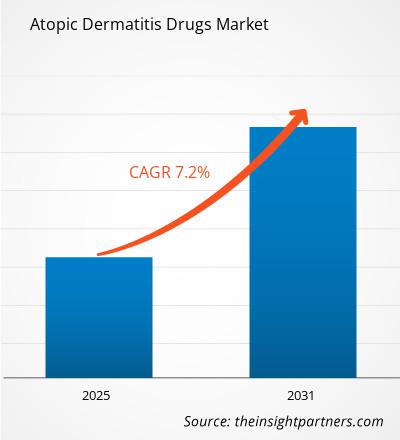
- Get the Atopic Dermatitis Drugs Market top key players overview
Key Selling Points
- Comprehensive Coverage: The report comprehensively covers the analysis of products, services, types, and end users of the Atopic Dermatitis Drugs Market, providing a holistic landscape.
- Expert Analysis: The report is compiled based on the in-depth understanding of industry experts and analysts.
- Up-to-date Information: The report assures business relevance due to its coverage of recent information and data trends.
- Customization Options: This report can be customized to cater to specific client requirements and suit the business strategies aptly.
The research report on the Atopic Dermatitis Drugs Market can, therefore, help spearhead the trail of decoding and understanding the industry scenario and growth prospects. Although there can be a few valid concerns, the overall benefits of this report tend to outweigh the disadvantages.
Frequently Asked Questions
What is the expected CAGR of the Atopic Dermatitis Drugs Market?
What are the driving factors impacting the Atopic Dermatitis Drugs Market?
What are the future trends of the Atopic Dermatitis Drugs Market?
Which are the leading players in the Atopic Dermatitis Drugs Market?
What are the deliverable formats of the Atopic Dermatitis Drugs Market report?
What are the options available for the customization of this report?
- Historical Analysis (2 Years), Base Year, Forecast (7 Years) with CAGR
- PEST and SWOT Analysis
- Market Size Value / Volume - Global, Regional, Country
- Industry and Competitive Landscape
- Excel Dataset
Recent Reports
Related Reports
Testimonials
Reason to Buy
- Informed Decision-Making
- Understanding Market Dynamics
- Competitive Analysis
- Identifying Emerging Markets
- Customer Insights
- Market Forecasts
- Risk Mitigation
- Boosting Operational Efficiency
- Strategic Planning
- Investment Justification
- Tracking Industry Innovations
- Aligning with Regulatory Trends












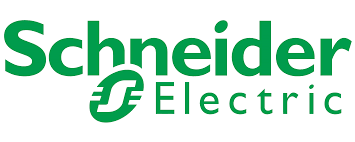


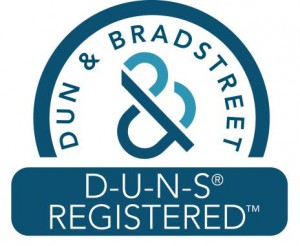
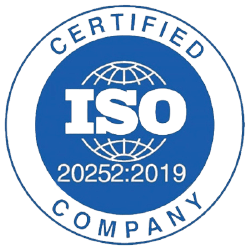
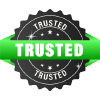



 Get Free Sample For
Get Free Sample For